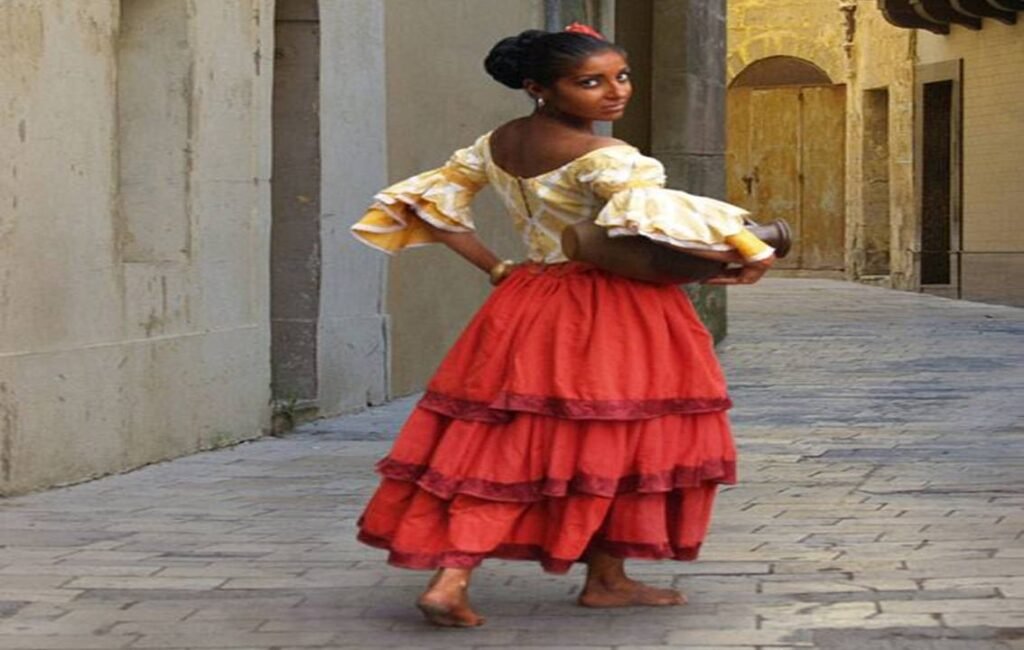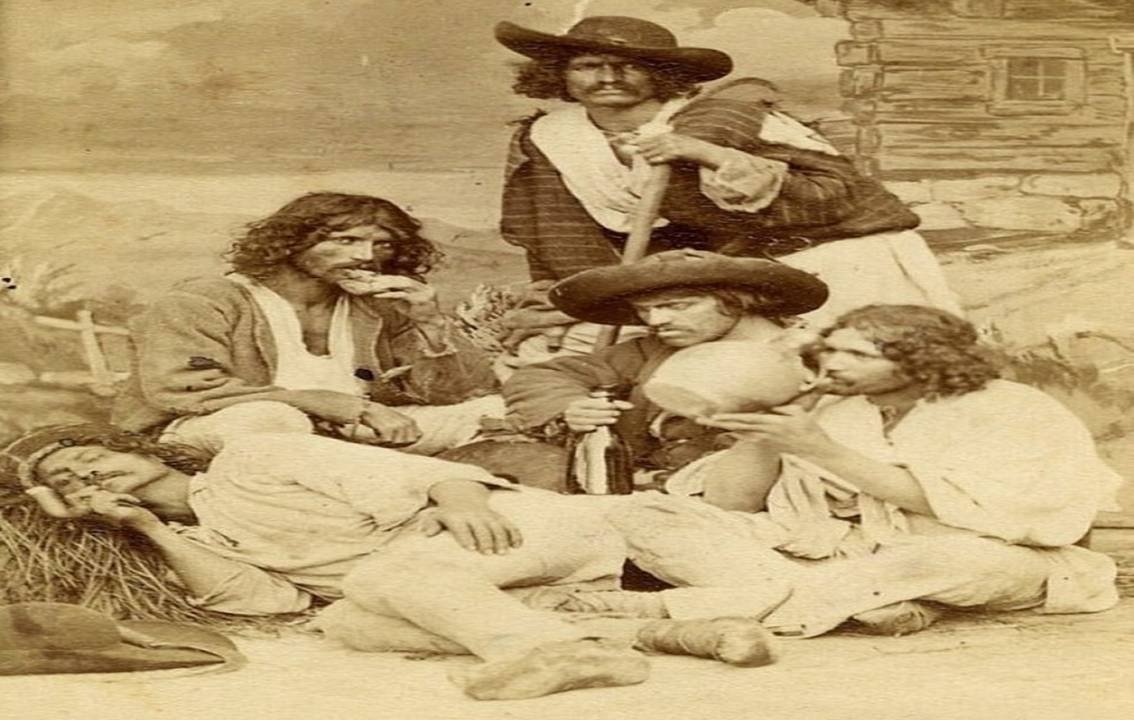THE ‘TSINGANI’ OF MANDIA & THE ‘GURUBETS’
A DISPERSED ETHNIC GROUP
The term ‘Roma’ mainly encompasses various sub-groups of people who share a distinct way of life. This includes constant travel and a unique style of music and craftsmanship. Although other ethnic groups associate with the Roma way of life, several mostly originate from the northern regions of India, usually making them immediately distinguishable. These particular Roma people began to arrive in Europe at the start of the 6th century. Their most concentrated populations today are located in Central, Eastern and Southern Europe.
SEPARATED BY FAITH
The Roma people of Cyprus are thought to have been active on the island for centuries, although a large influx of these settlers followed the Ottoman conquest of the island in 1571. Although these often dispersed ethnic groups held onto their own traditions and customs, most eventually adopted Christian Orthodox teachings. The Christian Roma people of Cyprus mainly became known as the ‘Tsingani’ of Mandia. Those who adopted the Muslim faith that was later largely practised by Ottomans on the island became known as ‘Gurubets’.
THE TSINGANI OF MANDIA
The ‘Tsingani of Mandia’ or ‘Mandithes’, as they later became known, mostly settled in the south of the island. Although the majority lived in the south, they also maintained small communities further north. These communities established a church dedicated to St. George of Mandia, in the present area of Ayioi Omologites, which was then known as Mandochori, within the City of Nicosia. The ‘Tsingani’ were regarded as the best tinsmiths on the island, and they were especially known for their skill and intricate, unique designs.
THE GURUBETS
The word ‘Gurubet’ derives from the Turkish word ‘Gurbet’, which translates to ‘foreign’. This is further compounded by their specific dialect, which only exists in Cyprus. This dialect is known as ‘Gurubetsia’ today. This unique language is formed mainly from Turkish, but borrows several words from Arabic, Persian, Kurdish, Greek and Armenian.
SIGNIFICANT SOCIAL & ECONOMIC CHALLENGES
The ‘Chronicle of Cyprus’, compiled by Florio Bustron, states that a group of ‘Tsingani’ with Greek-sounding names, paid taxes to the royal treasury during the reign of the last Lusignan king, James II. Despite these contributions, they, along with the ‘Gurubets’, frequently faced significant social and economic challenges. Discrimination and stigma were prevalent, leading to marginalisation in various aspects of their lives. Many lived at the time in impoverished conditions, often lacking access to basic education, healthcare, and employment.
RE-ESTABLISHING COMMUNITIES
The Venetian era on the island eventually brought acceptance of the mostly Christian ‘Tsingani’. The mainly muslim ‘Gurubets’, however, were still viewed with a great deal of fear and suspicion. They were often accused of spying or aligning themselves with the Ottomans, who were the main threat to the island at the time. This led to severe persecution, and many were exiled from the island, drastically reducing their numbers across the island. Some would later return, however, after the Ottoman invasion of the island in 1571. Ottoman occupation forces included contingents of exiled ‘Gurubets’, and they provided crucial intelligence for their conquest. Their fortunes drastically changed after the Ottomans took control of the island.
AN UNRIVALLED CRAFTMANSHIP
According to several references from the 16th and 17th centuries, both Roma communities on the island often collaborated. They did this mainly through trade and the arts, which included music. The ‘Tsingani’ by this time, mainly engaged in the trading of horses. They were also excellent blacksmiths, metal, wood and textile workers. Their craftsmanship on the island was unrivalled, and they often produced intricate handmade goods that they sold across the island. Their designs reflected a blend of traditional Roma motifs that were incorporated into local designs. This created a unique cultural fusion that enriched Cypriot artistic expression. The ‘Gurubets’, on the other hand, were mainly involved in farming activities, becoming wholesale domesticated animal traders. Unlike the Tsingani, they also had a small community that travelled throughout the island. They mainly became story, newsreaders and fortune-tellers that aligned more with their traditional way of life.
MUSIC & DANCE
Both communities made significant cultural contributions to the island’s heritage. Their influence was particularly evident in their music and dance. Traditional Roma music, characterised by its vibrant melodies and rhythms, was incorporated with elements from various cultures that they had interacted with over several years. Musicians from both communities often performed during local festivities, blending their unique sound with Cypriot folk traditions.
GREEK OR TURKISH?
When Cyprus became a British colony, British administrators considered all ethnic minorities on the island, including both the ‘Tsingani’ and the ‘Gurubets’, as Cypriot. The ‘Tsingani’ were considered Greek Cypriot, whilst the ‘Gurubets’ were considered Turkish Cypriot. Writings by David George Hogath focus on the village of Faleia in 1888. This village, located at the spur of a mountain beneath Ayios Photios in the Paphos District, is described as unique. He stated that although the village was considered a Turkish Cypriot village, its inhabitants were certainly not of Turkish origin.
THE GURUBET VILLAGE OF FALEIA
Faleia was at this time inhabited exclusively by ‘Gurubets’. David George Hogath stated that no other village on the island displayed the same peculiar type of people. He went on to state that these villagers were different in both character, appearance, and costume. The village also seemed to display an equal pitch of freedom between men and women, which at the time was unheard of. It was also noted that, although of the Muslim faith, the women who wore a profusion of gold ornaments about their persons and that they removed their veils to accost and speak openly to strangers in the company of men. He also recorded that the faces of these villagers were also of extreme swarthiness, and each had impressive locks of raven black hair. Their brilliant dark eyes were enhanced by their fine, narrow noses and taut lips, and they had smaller ears by comparison.
SEPERATED & LONG DEPARTED
Today, the village of Faleia lies abandoned with its inhabitants long departed. The majority left the village after the war and subsequent division of the island in 1974. The war meant that all of the ‘Gurubets’ in the south moved to the north, and the ‘Tsingani’ in the north eventually resettled in the south. This helped to confirm their respective affiliations to both the Greek and Turkish Cypriot communities that they served. Today, there are approximately 3000 people of Roma descent living in the Republic of Cyprus, and most have created semi-permanent communities in most areas of the island.




